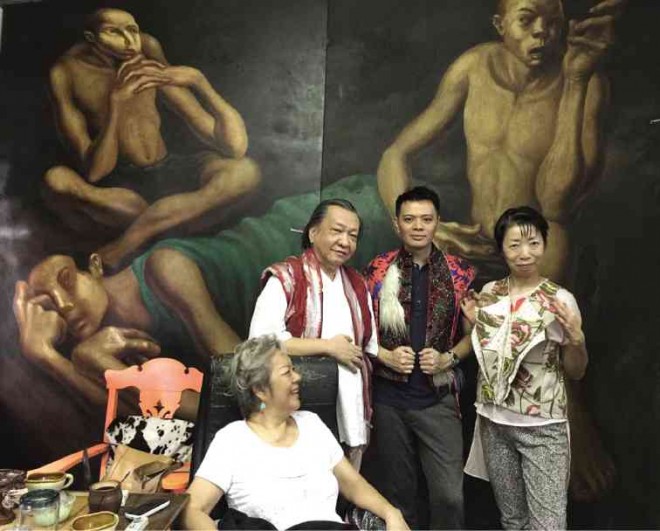
A group of philosopher Rudolf Steiner followers who call themselves “anthroposophists” offer something they call a biography workshop, ideally for people 28 years old and above.
The workshop “will help you gain a clearer picture of your identity and the meaning of your life. You will understand how its challenges, patterns and themes reveal an insight on your past, present and future. It will lead to a deeper understanding of your destiny and validate your life mission.”
I had it done on me once, a few hundred years ago, and somehow I wanted another.
And so I engaged professional biography worker Belay Gruenberg to rake over my life. At the age I am now, it is like a backward review. Among the things you have to do in this “life investigation” is to recall the significant things that occurred in your lifetime and at what age. They will reveal patterns that will make you understand why certain things happen in your life (right ba, Belay? Maryjoan? Brenda? Jake?)
Humiliation
I will share with you my first seven years and more if I don’t get lazy.
My first day in school was 1934; four years old, kindergarten, St. Theresa’s College, San Marcelino St., Malate. Run by Belgian nuns. I was a sheltered only child. My gullible mother, I am sure, had been advised by those rigid European nuns that it was better to leave me there alone to sink or swim. There was still no such thing then as child psychology.
Bewildered and crying, I was sent “to the corner” (a popular classroom punishment in the ’30s aside from being “sent out” of the room and standing on the corridor for all to see). I had a toy in my hand and a balloon tied to my wrist, supposedly everything a child could want.
What I cannot forget is the humiliation I felt. The nuns had unwittingly made me an example of a “spoiled child.” I was scared out of my wits. And didn’t “spoiled” mean getting everything one wanted? Me? I always got everything my mother thought I wanted, but she was always wrong. It is called good intentions.
When I was Grade 2, I was invited to my first birthday party. Children’s parties weren’t common in the ’30s. As usual, my mother had dressed me smartly, but, horrors, she forgot to buy me a gift for the celebrant!
I realized it when the birthday girl began unwrapping gifts in front of us guests, squealing with delight when she loved what she got. Although no one noticed that I had no present, it was a strike two against my mother. Ang tanga ng mommy ko! From then on, I decided that I couldn’t rely on this mommy. I had to take care of myself.
Imported textbook
At seven years old, my playmates were the five daughters of Mang Andoy, a driver (not ours) who rented one of the entresuelos under our bahay na bato. I was always drawing with Tinay, Vihing, Tita, Iding and Mely on paper trimmings of calendars and stationery they collected daily from the Chinese printing press to use as kindling for their clay stove. The bigger papers (in pink, yellow and blue) we saved to draw on. Everyday we drew on their crude dining table.
Once, my playmates showed me the book they used in public school. It was the Camilo Osias readers. The kids in it played Filipino games of the ’30s using bamboo poles and coconut shells (bao). How different from the golden-haired kids who lived on Elm street with a dog called Spot who populated my imported textbook. (The dog in it was named Bantay).
I was consumed with envy. Although I didn’t realize it, that was probably the trigger that made me eventually make it my mission to produce books on Philippine culture for Filipino readers.
But I think in spite of all that elite Belgian education I got from St. Theresa’s, being Filipino had already seeped in much earlier. I was still sleeping in a child’s bed with a protective bar on either side. Nightly, a yaya was assigned to sit on the floor beside my bed to keep me company till I feel asleep.
That was the first time I got introduced to the Juan Tamad stories and sad songs like “May Isang Ibong Sawi” that my homesick yaya sang. I always cried at the part where the bird, flying in against the wind, broke a wing and could no longer fly. So distraught I was, I would cover Segunda’s mouth so she couldn’t continue the piteous song. (It also connected somehow to the difficult life of poor folk in the rural area where she had come from).